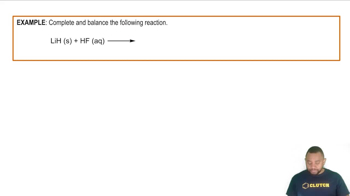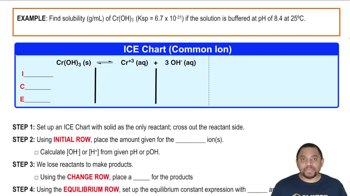Here are the essential concepts you must grasp in order to answer the question correctly.
Solubility Product Constant (Ksp)
The solubility product constant (Ksp) is an equilibrium constant that applies to the solubility of sparingly soluble ionic compounds. It represents the product of the molar concentrations of the ions in a saturated solution, each raised to the power of their coefficients in the balanced equation. For FeS, Ksp = [Fe^2+][S^2-], and a comparison of the ion product (Q) to Ksp determines whether a precipitate will form.
Recommended video:
Solubility Product Constant
Ion Product (Q)
The ion product (Q) is calculated using the concentrations of the ions in solution at any given moment. If Q exceeds Ksp, precipitation occurs; if Q is less than Ksp, the solution remains unsaturated. In this case, calculating Q for FeS using the concentrations of Fe^2+ and S^2- will help determine if FeS will precipitate under the given conditions.
Recommended video:
Production of Hydrogen Example
Effect of pH on Solubility
The pH of a solution can significantly affect the solubility of metal sulfides like FeS. At lower pH levels, the concentration of H2S is higher, which can suppress the formation of S^2- ions, thus reducing the likelihood of precipitation. Conversely, increasing the pH to 8 with an NH4+-NH3 buffer will increase the concentration of S^2- ions, potentially leading to precipitation of FeS if the ion product exceeds Ksp.
Recommended video:
Solubility at Buffered pH Example
 Verified step by step guidance
Verified step by step guidance


